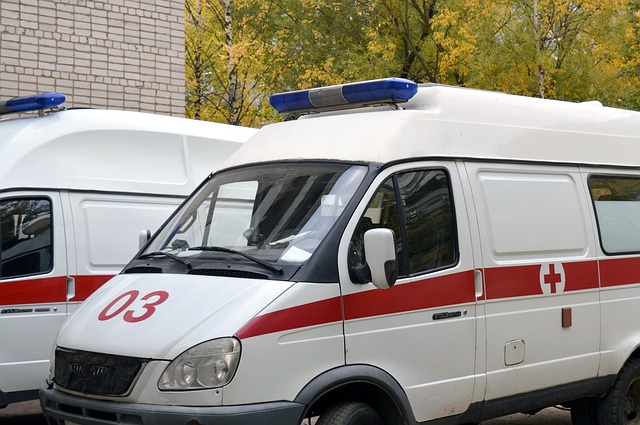EMS Training: Paths to Emergency Medical Service and Paramedic Roles
Emergency medical service training prepares people to respond to urgent medical situations with practical skills, clinical knowledge, and situational judgment. Whether aiming to become an EMT or a paramedic, training programs combine classroom instruction, hands-on skills labs, and clinical experiences to build competence in assessment, airway management, medication administration, and patient transport. Understanding program types, certification steps, and typical career pathways helps prospective students choose the right pathway for their interests and local requirements.

This article is for informational purposes only and should not be considered medical advice. Please consult a qualified healthcare professional for personalized guidance and treatment.
What is emergency medical service training?
Emergency medical service (EMS) training covers the range of education needed to work on ambulances, in hospital emergency departments, or in community response roles. Programs vary in length and depth from basic first-aid and EMT (emergency medical technician) courses to multi-year paramedic programs. Core topics include patient assessment, trauma care, cardiac life support, airway management, and documentation. Training emphasizes both technical skills and non-technical abilities like communication, teamwork, and decision-making under stress, which are essential for safe prehospital care.
How does ems training differ by certification?
EMS training is organized around certification levels that reflect scope of practice and responsibility. Entry-level EMT courses often run from several weeks to a few months and teach basic life support, oxygen use, bleeding control, and splinting. Advanced EMT and paramedic programs add pharmacology, advanced airway techniques, cardiac monitoring, and more complex patient management. Certification often requires passing a national or regional exam and meeting continuing education or recertification requirements. Local regulations determine what procedures and medications providers may use in the field.
What skills does paramedic training develop?
Paramedic training builds on EMT fundamentals and focuses on advanced clinical skills, critical thinking, and independent decision-making. Students learn advanced airway management, intravenous access, drug administration, ECG interpretation, and advanced trauma care. Programs include clinical rotations in hospitals and supervised field internships on ambulances to apply classroom learning. Soft skills such as patient communication, cultural competency, and scene safety are integrated throughout. Successful completion prepares graduates to function as primary medical providers in many prehospital scenarios and to collaborate with other emergency care professionals.
How long is typical training and certification?
Training duration depends on the level sought and the program format. EMT courses often require 120–180 hours and can be completed in weeks to months. Paramedic programs usually range from 1,200 to 1,800 hours and may take one to two years, often resulting in a certificate or associate degree. After coursework, most jurisdictions require passing a certification exam such as the National Registry of Emergency Medical Technicians (NREMT) exam and completing background checks and immunization requirements. Continuing education and periodic recertification maintain skills and legal eligibility to practice.
How can EMS training shape a career?
EMS training opens multiple career pathways beyond ambulance work. Many providers move into hospital emergency departments, critical care transport, community paramedicine, fire services, disaster response, education, or healthcare administration. Advanced credentials and experience can lead to supervisory or clinical instructor roles. Some pursue related healthcare degrees (nursing, respiratory therapy, physician assistant) using EMS experience as a strong clinical foundation. Soft skills developed in EMS—communication, leadership, and crisis management—are transferable across healthcare and public safety fields.
Real-world providers and training options vary by region. Below is a sampling of widely recognized organizations and common program providers that offer EMS-related instruction or certification. Check local services and accreditation status when choosing a program.
| Provider Name | Services Offered | Key Features/Benefits |
|---|---|---|
| American Red Cross | First aid, CPR, some chapters offer EMT courses | Widely available community courses, standardized curriculum, focus on lay responder skills |
| American Heart Association | CPR, BLS, ACLS, PALS training | Industry-standard resuscitation courses used by many healthcare employers |
| National Registry of EMTs (NREMT) | Certification exams and recertification services | Nationally recognized certification testing and credentialing resources |
| Community Colleges | EMT and paramedic certificate or degree programs | Accredited programs, campus-based labs, clinical rotations and college credit |
| Private EMS Academies | Accelerated EMT/paramedic courses and skill labs | Intensive schedules, focused hands-on training, partnerships with local agencies |
Note: Prices, rates, or cost estimates mentioned in this article are based on the latest available information but may change over time. Independent research is advised before making financial decisions.
Conclusion
Choosing EMS training involves weighing program content, duration, local certification requirements, and the practical opportunities for clinical experience. Whether starting with basic airway and hemorrhage control or pursuing the advanced scope of paramedic practice, training provides a foundation of clinical skills and professional behaviors that support safe patient care. Prospective students should consult accredited programs and local emergency medical service authorities to confirm pathways and licensure details in their area.






